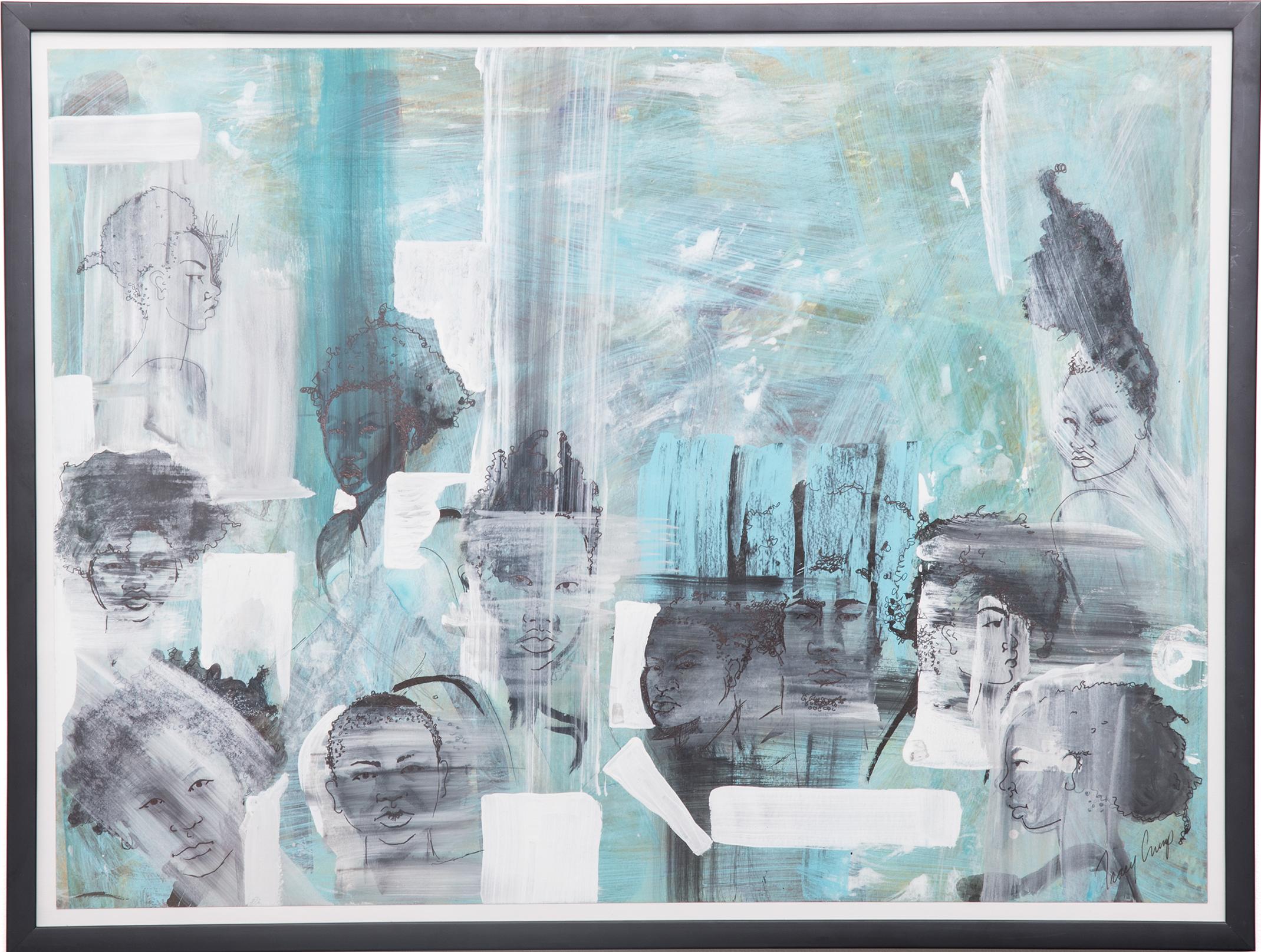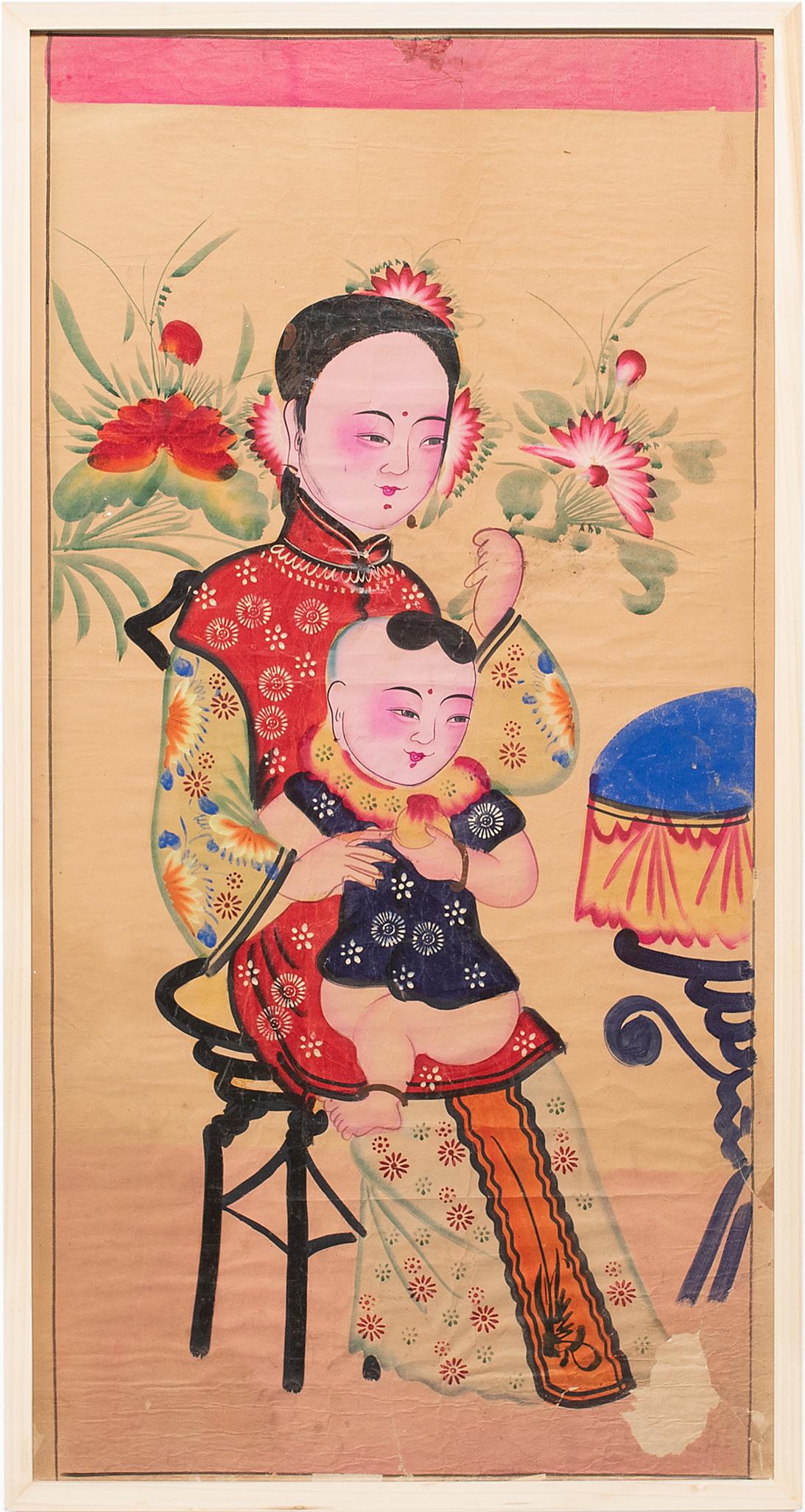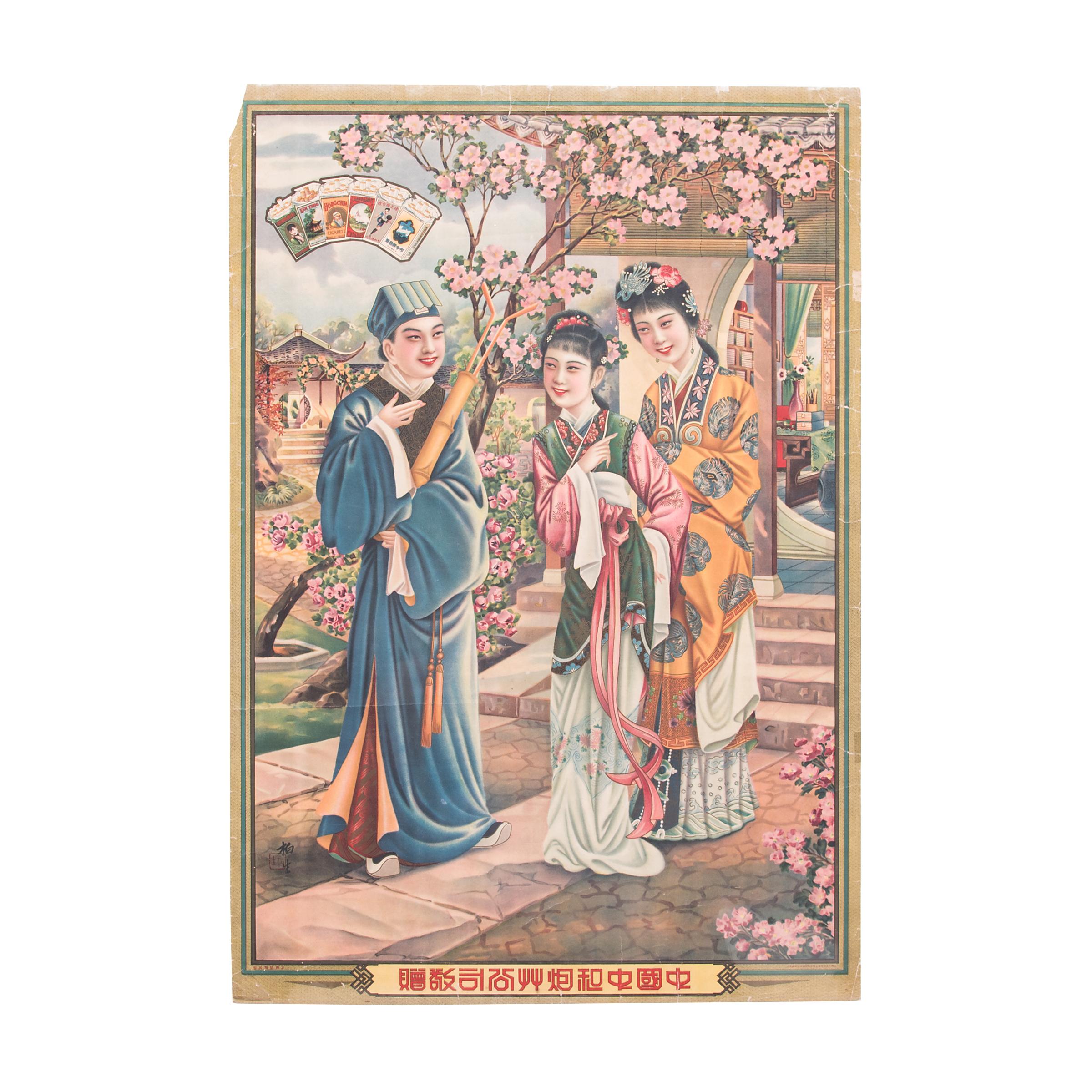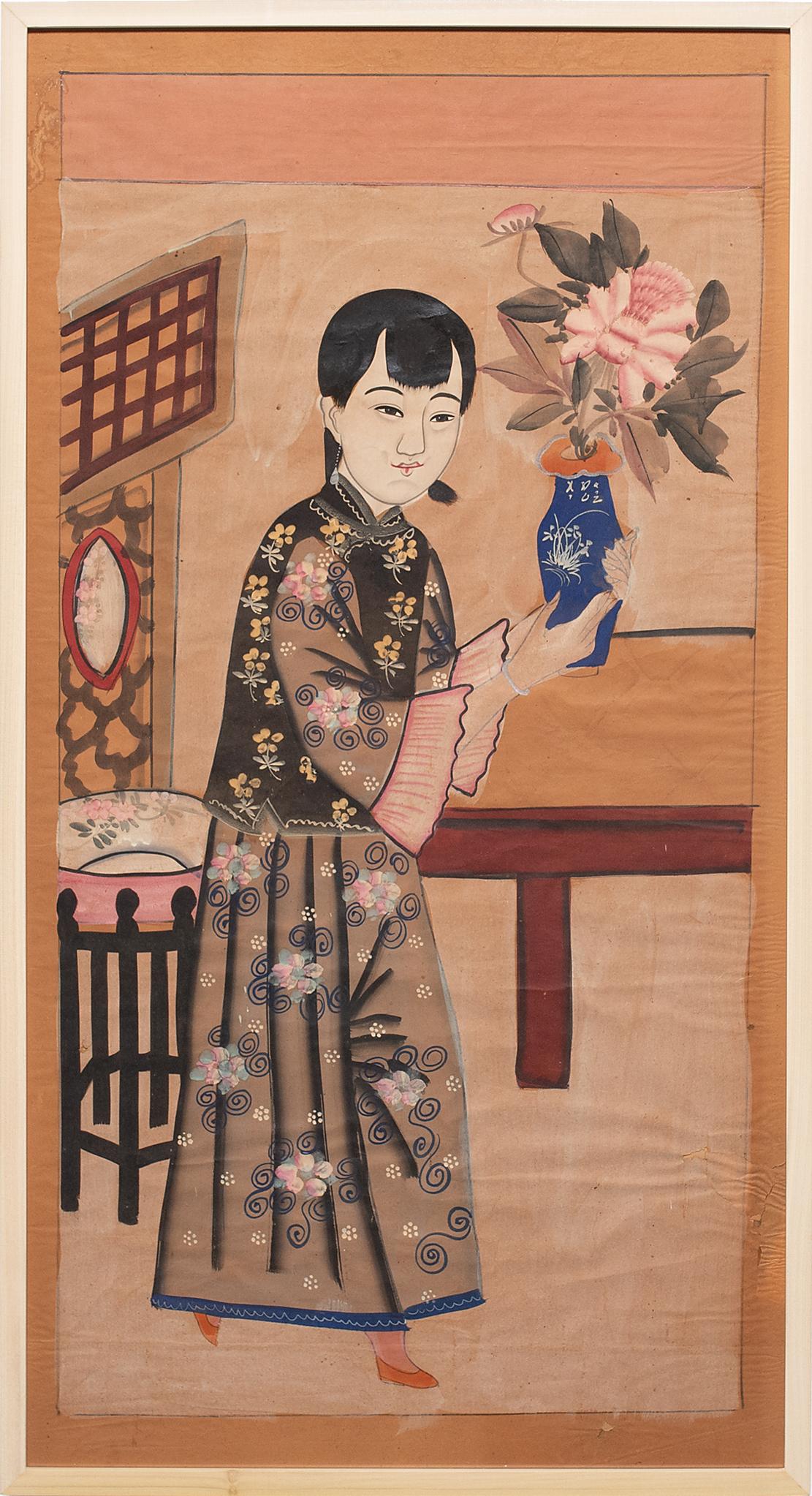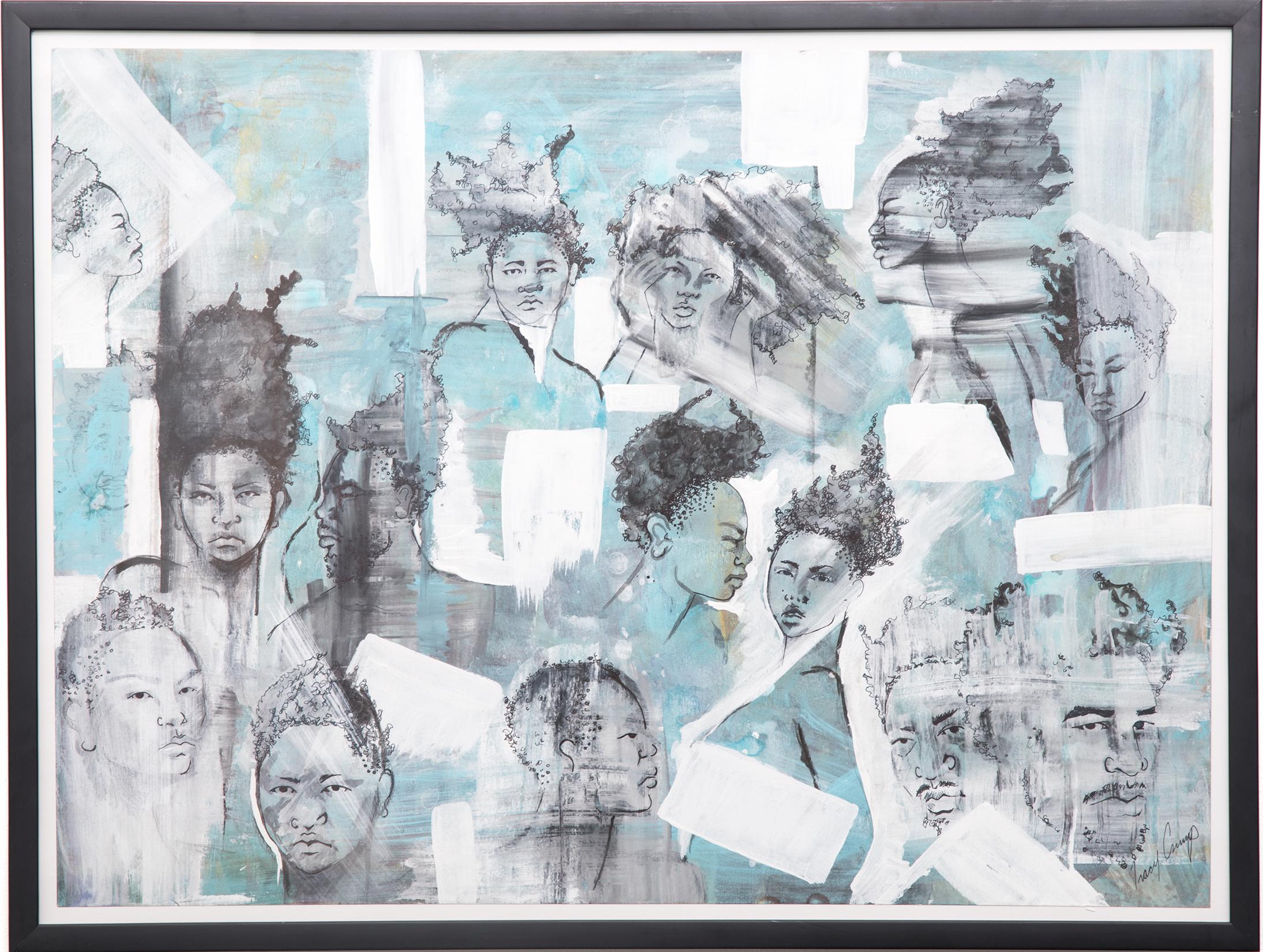Items Similar to Scroll painting of the American ship commanded by Commodore Matthew Perry
Want more images or videos?
Request additional images or videos from the seller
1 of 9
Scroll painting of the American ship commanded by Commodore Matthew Perry1854
1854
About the Item
Attributed to Ukita Ikkei (1795-1859)
Hanging scroll painting of the American ship commanded by Commodore Matthew Perry in Uraga Bay, annotated: ‘1854 Spring first month 8 xx (February) Kan-no Hachiro saw this big American wheel vessel past Cape of Kan-non going to Uraga village’
Ink on paper,
L. 130 x W. 29 cm (scroll)
H. 28 x W. 19 cm (painting)
Based on the description by Kan-no Hachiro of the return of Perry’s ship to the bay of Edo in 1854, Ukita Ikkei presumably made this painting. The artist’s family name was Toyotomi and the first name Kõshin later changed to Yoshitame and finally Ikkei.
Kan-no (1810-1880) was a peasant from the village of Iwashiro. In 1854 he saw Perry’s ship passing on the way to Edo Bay. Kan-no was an ardent follower of the Sonno foi Movement, a movement advocating loyalty to the Emperor and the expulsion of foreigners.
Despite his low status, he became a significant and famous figure in the Sonno foi Movement, and for this, he was punished by the Edo Bakufu, the Shogun government. He was banished to Hachijyo, a small island far away in the Pacific Ocean.
Perry’s first violation of Japanese autonomy was on the third day of the sixth month of 1853 (July 8), on the eleventh day of the first month of 1854 (February) he was back in the Bay of Uraga, and on the 31st of March the Convention of Kanagawa, opening the ports of Hakodate and Shimoda to American vessels, was signed.
Literature:
Encyclopedia of Japanese painters, ‘Nihon gaka jiten’ p. 17
- Attributed to:Ukita Ikkei (1795 - 1859, Japanese)
- Creation Year:1854
- Dimensions:Height: 51.19 in (130 cm)Width: 11.42 in (29 cm)Depth: 0.08 in (2 mm)
- Medium:
- Movement & Style:
- Period:
- Condition:
- Gallery Location:Amsterdam, NL
- Reference Number:1stDibs: LU1471210574672
About the Seller
No Reviews Yet
Vetted Seller
These experienced sellers undergo a comprehensive evaluation by our team of in-house experts.
1stDibs seller since 2021
- ShippingRetrieving quote...Ships From: Amsterdam, Netherlands
- Return PolicyA return for this item may be initiated within 7 days of delivery.
More From This SellerView All
- 1854 Funeral of R. Williams at Gyokusen-ji Temple, Shimoda, with Commodore PerryLocated in Amsterdam, NLWilhelm Heine (Dresden 30 January 1827-Löbnitz 5 October 1885) ‘Funeral of Robert Williams in the cemetery of the Temple Gyokusen-ji at Shimoda in April 1854’ With a sticker on the reverse of the frame by Coupil & Co. 1855 Watercolour on paper, H. 57 x W. 92 cm Depicted is the Bay of Shimoda with seven American ships including the two paddle-wheel warships USS Mississippi and Susquehanna. On the Gyokus- en-ji temple grounds on the right is the coffin in the middle with the remains of US marine Robert Williams, ready to be lowered into the grave. Looking on from the left are the Buddhist monks and Japanese officials who joined the first Christian funeral on Japanese soil. Around the grave are US marines, Commodore Perry...Category
Mid-19th Century Figurative Drawings and Watercolors
MaterialsPaper, Ink, Watercolor, Gouache
- Wobbly bridge, Tabanan, Bali, 1937Located in Amsterdam, NLWobbly bridge, Tabanan, Bali, 1937 Signed with initials bottom right and dated, bottom left Pencil and ink on paper, 22 x 26.3 cm In ebonized frame with white mount Willem Otto Wi...Category
1930s Art Nouveau Landscape Drawings and Watercolors
MaterialsIndia Ink, Paper, Pencil
- Beach of Kusambe, Bali 1937Located in Amsterdam, NLFour outrigger proa’s on the beach of Kusambe, Bali, 1937 Signed with initials, dated and described with location bottom left Pencil and ink on paper, 29.7 x 35 cm In ebonized frame with white mount WILLEM OTTO WIJNAND NIEUWENKAMP (1874-1950) Nieuwenkamp was born on July 27th 1874 in Amsterdam. His father owned sailing ships sailing to Indonesia and hearing the stories of the returning captains evoked in the young Nieuwenkamp an obsession for distant lands and adventure. After a failed attempt by his father to have his son make a career in his business, Nieuwenkamp attended the Academy for Decorative Art in Amsterdam. However, he left within one year to go his own way. He was an autodidact and a great experimenter with new techniques, particularly in the art of etching. Nieuwenkamp was a very focused man with the discipline of a scientist tempered by the sensitivity of an artist, a lust for adventure, a natural appreciation for ethnic arts and an enormous ambition to tread new paths. In 1898 he visited Indonesia for the first time and on his second visit in 1903-1904 he went on to Bali and became the first foreign artist to love Bali and the Balinese with a passion. Having secured agreements with several museums in the Netherlands to obtain Balinese art and objects for their collections, Nieuwenkamp immediately started to purchase and order a wide range of ethnographic art and objects from local artists and craftsmen. Through his drawings and books, he gave an excellent impression of Balinese art and culture at that time. Since 1854 Northern Bali was under Dutch...Category
1930s Art Nouveau Landscape Drawings and Watercolors
MaterialsIndia Ink, Paper, Pencil
- Statue of Vishnu Garuda, Bali, 1904Located in Amsterdam, NLStatue of Vishnu Garuda, Bali, 1904 Signed with initials Pencil and ink on paper, 21.4 x 21.3 cm Literature: Bruce W. Carpenter, W.O.J. Nieuwenkamp. First European Artist in Bali,...Category
Early 1900s Art Nouveau Landscape Drawings and Watercolors
MaterialsPencil, Paper, India Ink
- Devotion in the Dessert near the pyramids of Gizeh, circa 1919By Marius BauerLocated in Amsterdam, NLMarius Bauer (1867-1932) ‘Devotie in de Woestijn’ (Devotion in the Dessert near the pyramids of Gizeh, circa 1919) Signed lower right and titled lower left Watercolour on paper, H...Category
Early 20th Century Impressionist Landscape Drawings and Watercolors
MaterialsPaper, Pencil, Watercolor, Ink
- Borobudur, Java, Indonesia (1937)Located in Amsterdam, NLGraveyard with in the background the Borobudur, 1937 Signed with initials and dated bottom left Pencil and ink on paper, 33 x 29 cm In ebonized frame with white mount Literature: ...Category
1930s Art Nouveau Landscape Drawings and Watercolors
MaterialsPaper, Ink, Graphite
You May Also Like
- "The People People 5, " Paint on Paper, 2006Located in Chicago, ILIn this series entitled "The People People," Tracy Crump uses washes of grey, white and aqua to both conceal and reveal sensitively drawn figures. Each figure stands alone as an indi...Category
21st Century and Contemporary Outsider Art Figurative Drawings and Water...
MaterialsPaper, Ink, Acrylic, Watercolor
- Yangliuqing Longevity New Year Painting, c. 1920Located in Chicago, ILChinese New Year paintings (nian hua) are colorful folk paintings created to celebrate the annual Spring Festival. Drawn or printed by folk artists in regional studios, nian hua pain...Category
Early 20th Century Folk Art Figurative Paintings
MaterialsInk, Pigment, Paper
- Vintage Chinese Cigarette Advertisement Poster, c. 1930Located in Chicago, ILThis poster from the 1930s draws from a well known Chinese opera scene. It melds the meticulous detail of traditional Chinese painting with the craft of color lithography. These advertisements, influenced by the Art Deco movement in the west, recall the economic boom of early 20th century Shanghai, an international center of business and trade. Layered with imagery of traditional Chinese life, the poster is nonetheless an advertisement for the modern cigarette industry, with several tobacco brands displayed in the top left corner, including Lan Ting, Hong Chun, and Jade Rabbit...Category
Early 20th Century Art Deco Figurative Drawings and Watercolors
MaterialsPaper, Ink
- Yangliuqing Peace & Prosperity New Year Painting, c. 1920Located in Chicago, ILChinese New Year paintings (nian hua) are colorful folk paintings created to celebrate the annual Spring Festival. Drawn or printed by folk artists in regional studios, nian hua paintings featured exaggerated characters with bright and contrasting colors. Put up around the home to beckon luck and happiness in the coming year, most paintings depicted mythical guardians, scenes from folk operas, or auspicious symbols of good luck. This New Year painting depicts a young woman holding a vase filled with peony blossoms. This combination of motifs is a visual idiom for "may you have peace and prosperity" (ping'an fu gui). The early 20th century painting is from the town of Yangliuqing, one of the leading producers of traditional New Year's paintings known for its combination of woodblock printing...Category
Early 20th Century Folk Art Figurative Paintings
MaterialsPaper, Ink, Pigment
- 'The People People 2, " Acrylic Paint on Canvas, 2006Located in Chicago, ILIn this series entitled "The People People," Tracy Crump uses washes of grey, white and aqua to both conceal and reveal sensitively drawn figures. Each figure stands alone as an indi...Category
21st Century and Contemporary Outsider Art Figurative Drawings and Water...
MaterialsPaper, Ink, Acrylic, Watercolor
- "The People People 4, " Acrylic Paint and Watercolor on Paper, 2006Located in Chicago, ILIn this series entitled "The People People," Tracy Crump uses washes of grey, white and aqua to both conceal and reveal sensitively drawn figures. Each figure stands alone as an indi...Category
21st Century and Contemporary Outsider Art Figurative Drawings and Water...
MaterialsPaper, Ink, Acrylic, Watercolor
Recently Viewed
View AllMore Ways To Browse
Ship America
American Ship
Paintings Of Famous Americans
American Ship Paintings
American Ships Painting
Paintings Of American Ships
Ship Painting Watercolor
Scroll Painting
American Government
Antique Ship Painting Paintings
Antique Ship Painting
Antique Ship Paintings
19 Century American Artists
Drawings Of Ocean
Paper Scroll
Ship Painting 19th
Hanging Scrolls
Hanging Scroll
